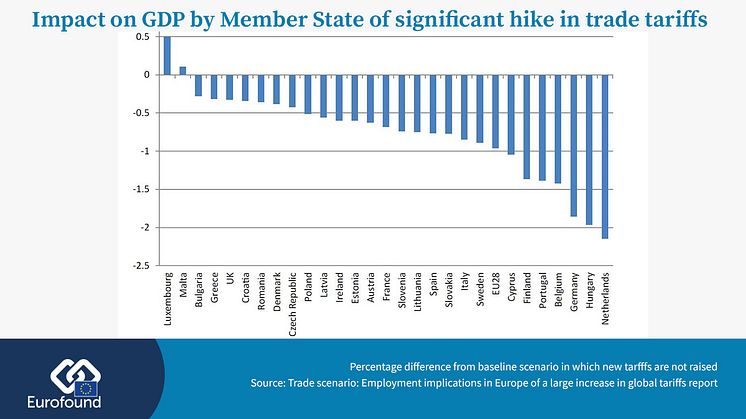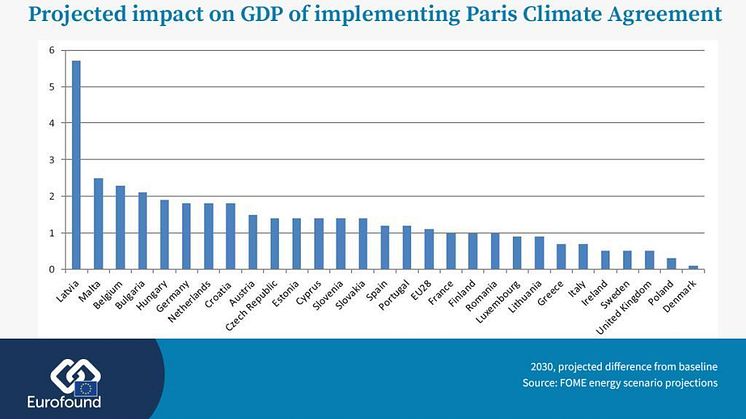
News -
Netherlands, Hungary, Germany stand to lose out most in Europe from global economic protectionism
This graph shows the projected impact of an immediate and significant increase in global trade tariffs on the GDP of each Member State in 2030, compared to a ‘no new tariffs’ baseline forecast.
Almost all EU Member States will experience a decline in GDP. In the case of the Netherlands, Hungary and Germany, this would be close to, or in excess of, 2%. Germany, Europe’s largest exporter to the US, is particularly vulnerable to higher US import tariffs. However, it is the Netherlands that stands to be the most affected economically from the direct impact of lower trade volumes to the US, and also more generally from weaker economic activity in the EU, as the Netherlands acts as one of the main ports for EU trade with destinations outside the bloc.
The world’s largest economies, particularly the EU, China, the US, Mexico and Canada are all projected to suffer economically from the re-emergence of protectionism, and a significant increase in trade tariffs. In the case of the EU, the bloc would experience a 1% contraction in GDP, a 0.3% lower rate of employment, and a 1.1% decrease in imports by 2030.
This analysis is based on a global macro-economic model run by Cambridge Econometrics and Eurofound’s European Jobs Monitor. It is detailed in the Trade scenario: Employment implications in Europe of a large increase in global tariffs report from the Future of Manufacturing in Europe (FOME) project.
The findings of this report, as well as other key outputs from the project will be discussed at the Future of Manufacturing in Europe event in Brussels on 11 April.
More information
Publication: Trade scenario: Employment implications in Europe of a large increase in global tariffs
Event: Future of Manufacturing in Europe
Project page: Future of manufacturing in Europe



